Drive Revenue Early With These 5 Hires
By Lars Nilsson, June 16, 2021

For the past 10 years, I’ve been a sales advisor here at True. It’s fascinating work to help brilliant founders turn ideas into revenue-driving businesses.
Although, in consultations with many early-stage SaaS companies, I’m often caught by surprise to learn that they’ve made upward of a dozen hires, yet zero are for customer-facing roles.
I get it. Many founders are design, product, or engineering-focused and have never hired for sales, marketing, or revenue operations. By the time someone questions a founder’s hiring, inbound leads have already fallen to the floor. Or, too many directors have been hired and the founder is left scratching their head as to how they have so much talent on their team but nothing is happening with their sales pipeline.
A post by SaaStr Founder Jason Lemkin got me thinking more about this common blind spot for the founders of SaaS startups. In his piece, Jason recommends hiring VPs in a certain order. Here, I back up even further and share what I think should be the first half dozen or so revenue-driving roles, before VPs are brought in to craft strategy.
If you’re a founder of a B2B SaaS startup and you’re starting to build out your team, consider hiring these revenue-driving contributors first, in the order outlined below, so you can get cash positive sooner.
A Digital Marketer or Content Creator
Once a founder has built something they’re proud of, they need a partner in crime to help shout it from the rooftops. Ideally, this is a mid-level digital marketer or content creator who can help develop a library of assets that can inspire and educate potential customers.
So many founders in their heart of hearts believe what they’re building is totally unique and disruptive. The world does not lack ambitious founders. But the entrepreneurs who take their work to the next level by publishing content at the earliest stage will give themselves a sharp edge in the thought leadership department.
Look for someone with experience writing blog posts, producing explainer videos, creating marketing materials, and interpreting a vision into succinct stories in various forms on various channels. It could even be a ghostwriter who can turn a phone call with a founder into social media posts if they don’t have the time to post themselves.
I’d argue that it’s worth spending significant capital on this early rather than later. That post of yours on Medium just might get you invited to speaking engagements earlier than your competitor, giving you a platform in addition to a product. Consider how you can broadcast these assets in all directions so prospects “trip” over your stories, take notice, and want to learn more.
A Pair of Sales Development Representatives
The second pipeline hire should be a mid-level sales development representative (SDR). They’ll have the sole task of setting up qualified meetings, or discovery calls, with prospects to generate pipeline. Once they do, the founder can attend meetings and sell the product or service.
I recommend hiring two SDRs at once if you can so you have two individuals generating pipeline alongside one another. Hiring in pairs can save a lot of time if one of the hires doesn’t work out. It also gives you something to compare in terms of productivity.
The digital marketer will be creating content and collateral that can inspire and teach prospects what they have to gain. The SDRs will use those materials to line up meetings. And the founder will be the passionate brand champion closing those initial deals.
To be clear, SDRs are not salespeople. They don’t close business. This is a non-quota-carrying role that manages inbound inquiries and qualifies them for function and fit, meaning whether or not they have the money to pay for the product or service. Sometimes SDRs are referred to as BDRs, business development representatives.
To understand more about the SDR role and if it fits into your B2B business model, check out this flow chart that guides you through how to think about sales at various stages of company and pipeline growth.
A Quota-Carrying Sales Representative
Founder-led sales are great, but it can only last for so long until deals dry up. Next, you’ll need a mid-level, quota-carrying sales rep’ who can quickly fold into operations and take over the deals in your pipeline.
This mid-level sales rep’ should have experience successfully closing deals for other companies and shouldn’t be so experienced that they’re hesitant to roll up their sleeves. You’ll want them to be a powerful individual contributor but also exhibit leadership. They should be a stretch candidate for a future head of sales role — hungry to prove themselves so they can move up the ladder and eventually help to build your sales team.
At this point, founders should only attend sales meetings with the biggest and most important prospects. Otherwise, they can hand over the reins to the sales rep’ who is going to want to shine in as many meetings as possible to meet their quota. If your SDRs are lining up a ton of pipeline and you have enough money coming in, you may consider hiring two quota-carrying sales reps instead of one.
One sign of a great sales rep’ is if they join you and immediately ask: “Okay, so where’s the content? What do you have for me?” This demonstrates that they have an understanding of how to win. And they’ll win if they have the right collateral for teaching prospects how to succeed with your product or service.
A Revenue Operations Lead
Once your digital marketer is cranking out sales materials and content, your SDRs are using those materials to set up discovery calls, and your sales rep’ is closing deals, it’s time to hire a revenue operations lead who can set up what’s needed to programmatically scale operations and forecast revenue.
This senior manager-level generalist should be responsible for implementing your CRM and stitching together your technology stack. Other platforms to consider when pulling together your revenue operation include a marketing automation platform, data provider, and sales engagement platform, among other key systems to help with both outbound and inbound demand generation.
Look for someone who has set up CRMs or other marketing automation platforms at larger companies and who knows demand generation best practices that will enable your team to switch to a process-driven sales operation.
Both the CRM and technology stack will allow for automation that enables you to nurture leads at the right time and in the right way. It will also help to ensure inbound leads will be intelligently nurtured. Your revenue operations lead is the most vital assurance that another company competing for the same business won’t leapfrog you.
A Customer Success Representative
As you begin to onboard your first few customers, it’s critical that they begin to receive value from your product or service immediately. In the B2B world of more complex software solutions, customer success provides this function.
Once your sales rep’ closes a deal, they then hand the relationship to customer success to keep customers happy and using the product so renewing is an easy “yes.” The more value the customer gets, the more likely they’ll continue to pay.
If you do this well, not only will your customers be able to justify their spend quickly, they’ll also prosper — and need more of what you offer. This will make them great candidates for upsell and cross-sell.
Similar to the level of your first sales rep’ whom you hope will aspire to a VP later on, your customer success contributor should show promise for a future managerial role once they’ve earned their stripes.
While different B2B SaaS teams will benefit from various combinations of the roles above, these five or so roles hired in the distinct ordering above can set a strong foundation for anyone looking to build a scalable revenue operation. But consider the nuances of your business. Some companies that offer products that are more complex may need their customer success rep’ earlier on to ensure customers can extract immediate value.
In general, fight the urge to build out your backend team before front-facing sales roles for the sake of pipeline. It could save you from painful delayering later, is likely to get you cash positive sooner, and will only help you the next time you fundraise.
A version of this article originally appeared on the SaaStr Blog.

